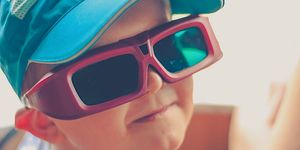See the Nasties on Your Skin with Your Smartphone
The skin is home to around 1.5 trillion bacteria, which together with fungi and viruses, make up the skin microbiota. This includes inside the mouth, where around 700 species of bacteria live, most of which play a central role in keeping tissues within the oral cavity healthy.
But within this collection of friends, there may be foes lurking—potentially pathogenic bacteria, capable of triggering everything from acne to gingivitis. Now, a team of bioengineers has developed a novel technique that enables us to “see” these bad guys, using our smartphones.
“Bacteria on skin and in our mouths can have wide impacts on our health — from causing tooth to decay to slowing down wound healing,” said Ruikang Wang, the lead inventor of the technology. “Since smartphones are so widely used, we wanted to develop a cost-effective, easy tool that people could use to learn about bacteria on skin and in the oral cavity.” The innovation from Wang and their team paves the way for a rapid and low-cost means of assessing whether bacteria on the surface of the skin may be harmful.
Conventional smartphone cameras capture pixels of three distinct wavelengths of visible light: red, green, and blue. However, on a microscopic level, bacteria are capable of emitting colors beyond this spectrum, which smartphone cameras can’t detect.
To overcome this limitation, the engineers designed a small black light-emitting device that attaches to the smartphone case. This 3D-printed ring contains 10 LED lights that illuminate while the photo is being taken.
“The LED lights ‘excite’ a class of bacteria-derived molecules called porphyrins, causing them to emit a red fluorescent signal that the smartphone camera can then pick up,” said Qinghua He, lead author of the study.
Porphyrins are metabolic byproducts secreted by bacteria and can reach detectable levels when there are large colonies of bacteria present. In general, high levels of porphyrins correlate with skin conditions such as delayed wound healing and severe acne.
This breakthrough paves the way for medical technologies that empower individuals to take control of their skin and oral health, say the researchers. For example, it could signal when it may be time to go for a dental cleaning or help physicians use the data to tailor clinical interventions for skin conditions.
According to Wang, there are many potential applications for this new technology. “There are a lot of directions we can go here,” said Wang. “Our bodies are complex environments, and this approach has great potential to look at many types of problems.”
Source: University of Washington, Optics and Lasers in Engineering.









